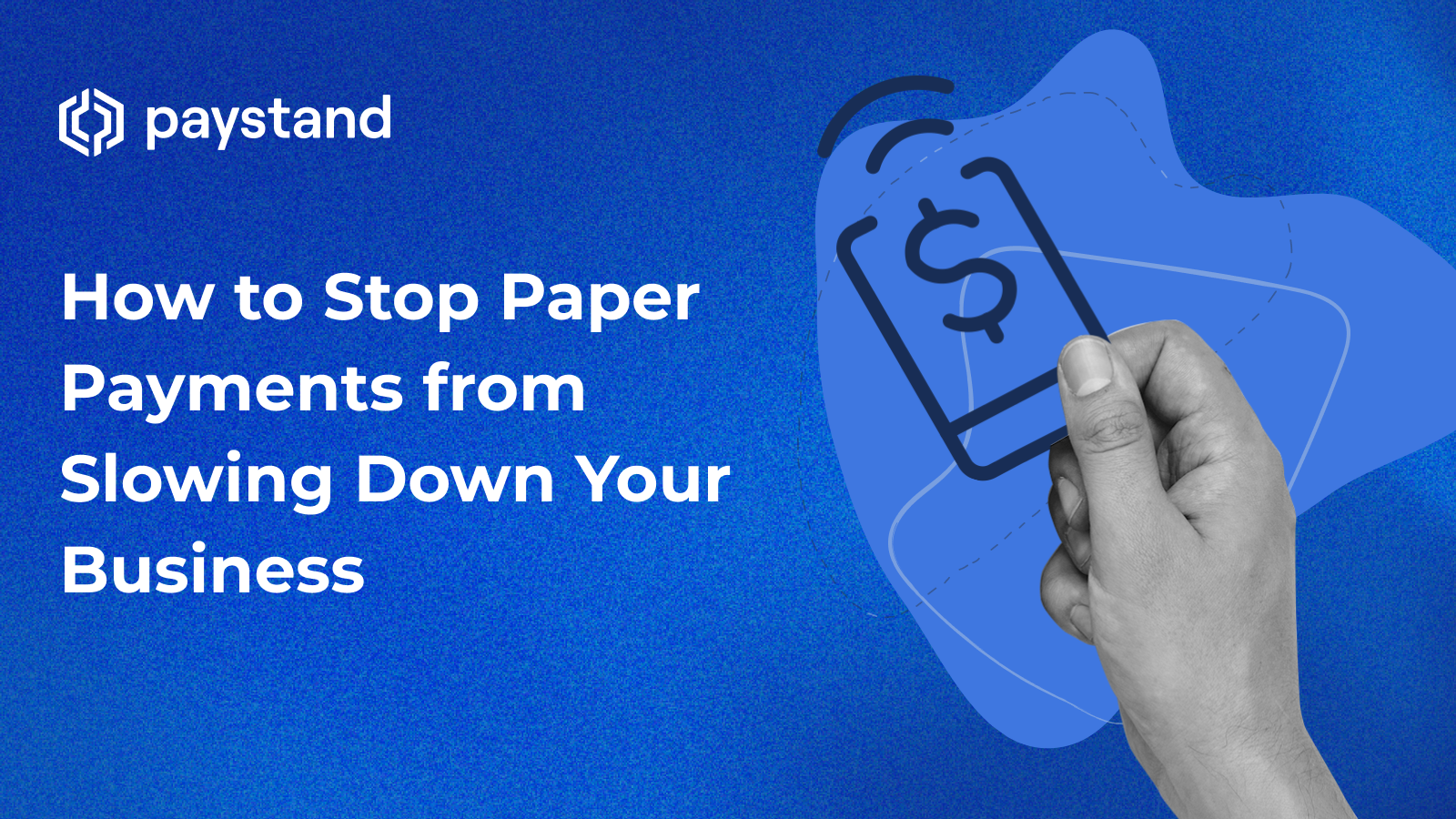How to Stop Paper Payments from Slowing Down Your Business

Table of Contents
- What Are Paper Payments?
- Why Do Companies Still Use Paper-Based Payments?
- The Issues with Paper Payments in the Supply Chain
- How Digital Payment Methods Improve Supply Chain Efficiency
Key Takeaways
- Paper-based payments create unnecessary costs, processing delays, and opportunities for fraud in the supply chain.
- Many companies still rely on checks out of habit—not efficiency.
- Switching to digital payment methods like EFT and real-time digital wallets significantly boosts accuracy, speeds up cash flow, and reduces operating costs.
- Paystand’s Bank Network helps businesses modernize their B2B payment systems and protect margins.
What Are Paper Payments?
Paper payments refer to physical payment methods like checks or money orders that require manual handling, physical delivery, and paper-based processing. While this approach may seem secure and familiar, it imposes unnecessary costs, delays, and risks of fraud, lost payments, theft, and inefficiencies across B2B supply chains.
Why Do Companies Still Use Paper-Based Payments?
Despite the rise of electronic funds transfer (EFT), credit card payments, and digital wallets, many B2B companies cling to paper checks. Why?
- Comfort and familiarity: Many accounting teams have used the same systems for decades and are hesitant to adopt digital tools.
- Lack of awareness: There’s often no public awareness to inform businesses of the true cost of check processing or the alternatives available.
- Inertia: Paper checks are often seen as “good enough,” even though they’re no longer competitive in today’s fast-paced global economy.
This outdated preference leads to higher fees, slower operations, and increased exposure to risk.
What Issues Are Associated with Paper Payments?
Here are the most damaging ways paper-based payment systems can hurt your business:
1. Higher Operating Costs
Paper checks require manual processing, postage, check stock, and physical lockbox services. These impose an extra administrative burden and cost more in labor than automated digital solutions.
2. Processing Delays and Bottlenecks
Unlike real-time digital payments, paper checks are only as fast as mail delivery and human availability. In times of high volume or limited staffing, this results in:
- Backlogs
- Delayed supplier payments
- Slower order fulfillment and delivery
3. Increased Risk of Errors and Fraud
Manual entry leads to mistakes. Whether it’s a typo or a lost check, errors in paper-based systems cause delays and improper payments. Worse, paper checks are easier targets for fraud and theft, lacking the controls found in secure digital systems.
4. Poor Visibility and Tracking
Unlike modern payment systems, paper checks don’t offer real-time tracking or confirmation. This makes reconciling invoices, resolving disputes, or monitoring cash flow difficult.
5. Cash Flow Disruption
When payments take days or weeks to arrive and clear, your working capital is tied up. This affects your ability to pay fees, fines, loans, and taxes, or reinvest in growth.
How Do Paper Payments Compare to Digital Payments?
The shift to digital payment methods offers measurable benefits:
1. Speed and Accuracy
With EFTs, ACH payments, e-checks, digital wallets, and blockchain-based transactions, payments are processed faster and with fewer errors. Most digital payments settle within hours—or instantly with blockchain—compared to days or even weeks with paper checks.
2. Lower Total Cost
While digital platforms may carry fixed transaction fees, they eliminate the variable labor, postage, and handling costs tied to paper. Blockchain payments can drive costs down even further by removing traditional intermediary fees, making budgeting more predictable and efficient.
3. Enhanced Security
Digital payments offer encryption, access controls, and audit trails that help companies defend against financial fraud and improper payments—a growing concern in today’s economy. Blockchain payments add an extra layer of protection by creating tamper-proof, verifiable transaction records.
4. Real-Time Reporting and Reconciliation
Digital payments integrate with ERP and accounting systems, removing the need for manual matching or reconciliation. Blockchain payments go a step further by providing immutable, real-time transaction histories, reducing the end-of-month crunch and improving cash flow visibility.
Go Digital with Paystand
Paper-based payments don’t just slow down your finance team—they can stall your entire supply chain. Paystand helps you modernize your payment systems, eliminating friction, cutting costs, and improving cash flow.
With Paystand, your business can:
- Eliminate paper checks from your B2B workflows
- Automate cash application and reconciliation
- Reduce the risk of lost payments, delays, and errors
Ready to break free from paper?
Download our Future of Finance ebook to learn more about the competitive edge of going digital.





%20(1)%20(1).jpg?width=100&height=100&name=IMG_3752%20(1)%20(1)%20(1).jpg)